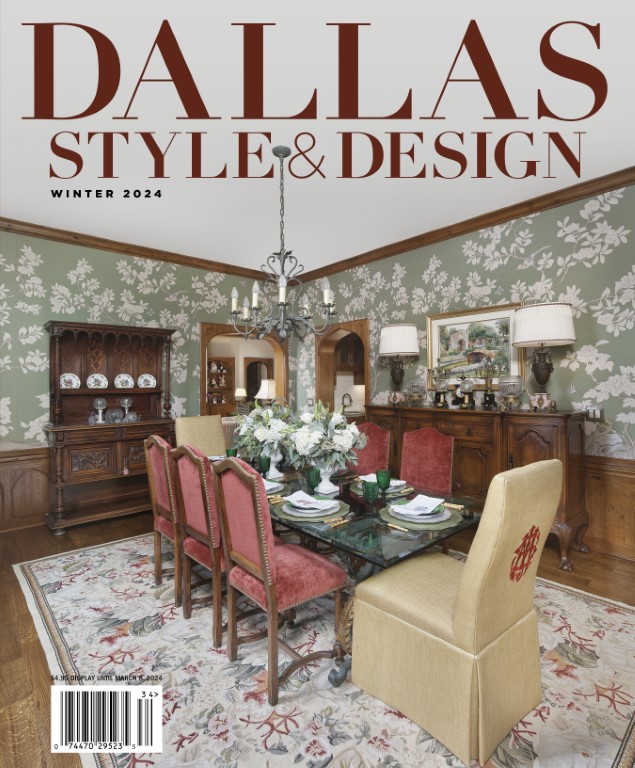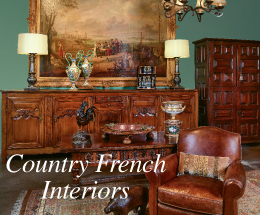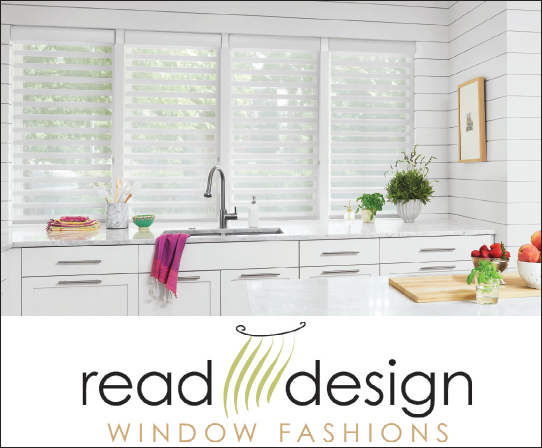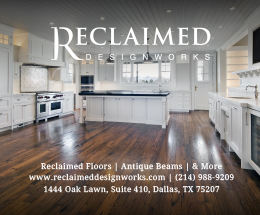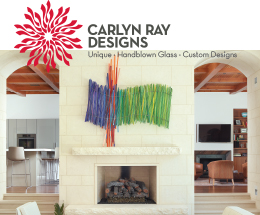REMEMBER THOSE SHOWPLACE KITCHENS of recent years with all the bells and whistles on display? The commercial-grade cooktops worthy of a Michelin-starred kitchen, the statement hoods, coffee stations, specialty ovens—and so much more.

They’re still all going strong, says Corinne Danicki, certified kitchen designer at The Kitchen Source, but with a twist for 2020: They’re going into hiding. cabinets; massive islands that can morph from dining areas into prep areas with removable tops; second kitchens to provide additional workspace, secondary appliances and much more. These are the trends Danicki is seeing from clients at the 29-year-old design and remodel firm in the Dallas Design District. The Kitchen Source is family owned and operated, and also has showrooms in Fort Worth and Southlake.
“One of the major trends is concealing what we call ‘points-of-use areas,’” Danicki says. “When you walk into a remodeled kitchen, your eye does not want to be drawn to a coffee maker or cooktop. So, what we are seeing is increased functionality, all organized and concealed with sliding doors or panels. It makes the space visually more appealing to the homeowner.”

The company is preparing to display a new island in its 10,000-square-foot Dallas showroom that details how a homeowner can have multiple layers in a countertop, providing additional concealment. That lower layer might include a recessed sink or a smooth induction cooktop. “A homeowner in a small space could start preparing a meal by sliding the countertop so that there’s workspace in front and island seating on the back side,” Danicki says.
The bottom line, she says: “You don’t always have to do what everyone did in the past. There are new ways to look at the elements in your space.”

While kitchen remodels are in its DNA, the company will provide custom remodels for any space in the house that includes cabinetry, such as bathrooms, closets and laundry rooms. The Kitchen Source focuses only on designing and installing brands that will stand by their products. For example, it carries several cabinet lines—Wood-Mode, Rutt, Grabill, Dutch Made, Woodharbor and Signature—all of which are handmade in the United States and carry a lifetime warranty.
“We offer our community a custom-manufactured cabinet in a factory setting in the United States,” Danicki says. “Our products are offering so much more—factory finish, lifetime warranty, interior accessories and more unique features.”

Another emerging trend is new directions in range hoods. Many clients are choosing to mount them flush with the ceiling, so that they can use the space around them for decorative features, such as shelving. “This way you might not notice the appliance so much,” Danicki says. “Your eye might be drawn more to a decorative backsplash.”
For those clients who do prefer to have a visible range hood, Danicki says she is seeing a resurgence of metal accents, in the same way jewels adorn an outfit. Perhaps it is a slim piece of brushed stainless steel or satin brass or an all-metal hood to make it stand out. “You might see a stainless steel hood with antique metal strapping. On the mantel part at the bottom, you might see an accent of satin brass. It’s a way to bring in new texture on an accent piece,” she says.

A recent project by The Kitchen Source combined many of the current trends. The homeowner’s original kitchen footprint was rectangular with two smaller, dark rooms attached to it for storage. The company knocked down a wall between the smaller rooms and created entrances to it from two sides of the kitchen so that light poured in. A walk-in pantry was installed, with navy blue shelving, storage for serving platters and bowls, a steam oven, a warming drawer and a coffee bar. That left the front of the kitchen for added visual pizzazz. “It was more of an inviting space, custom and well thought out,” Danicki says. “They were able to keep it more open by breaking down a barrier. You don’t always have to have a small, closed-off room off your kitchen.”
As customers adapt to the lifestyle changes brought on by the coronavirus pandemic—more time at home, eating in more, more family time—they’ll naturally start thinking about next steps for their homes. In addition to remodeling a kitchen, perhaps it’s creating workspace to entertain clients or incorporating gym-like elements into their bathrooms.
“I’m hoping that when our country heals and we get back on track, people will value their space at home and see how they can improve it for their lifestyles,” Danicki says.
Freelance writer and editor Connie Dufner is a proud Texan transplant living in Washington, D.C. She is a former editor for Modern Luxury Dallas and The Dallas Morning News who has been covering interiors journalism since 2001.

